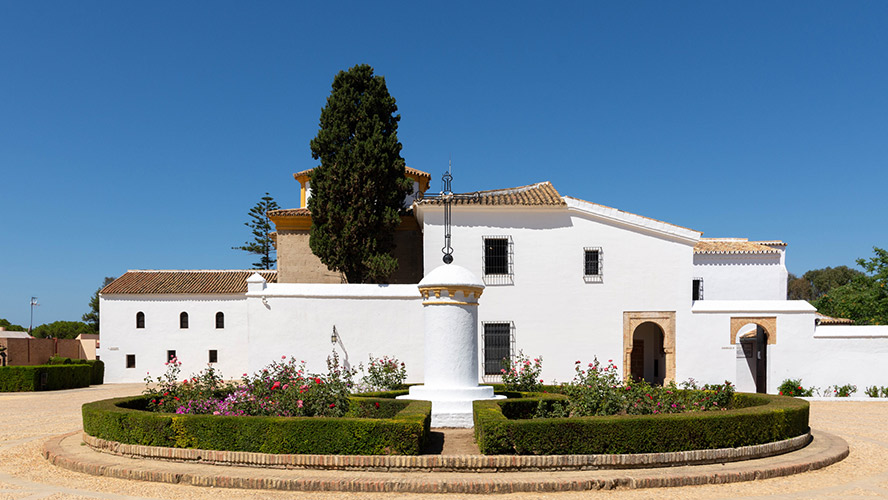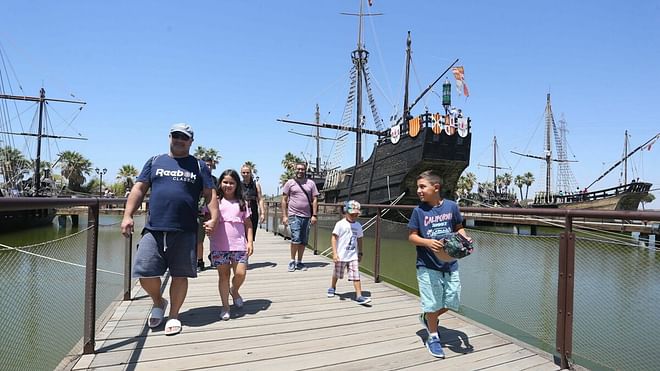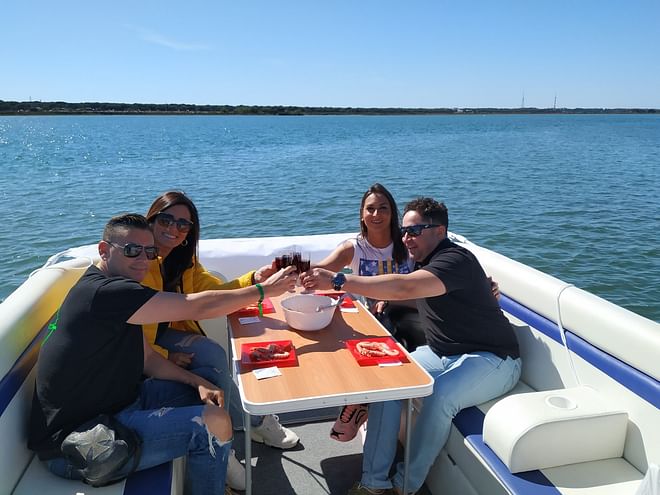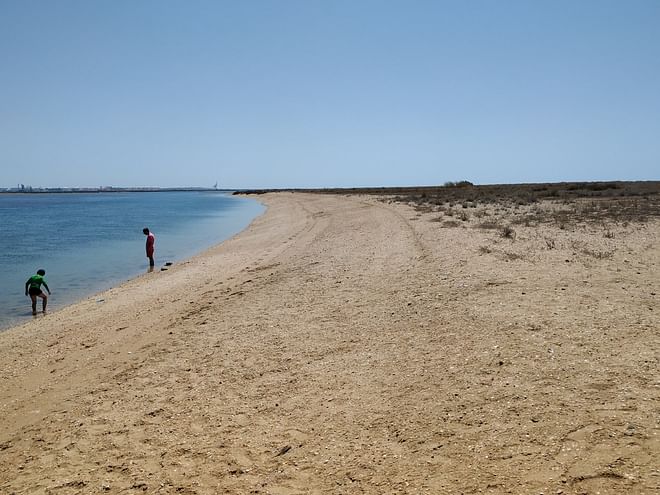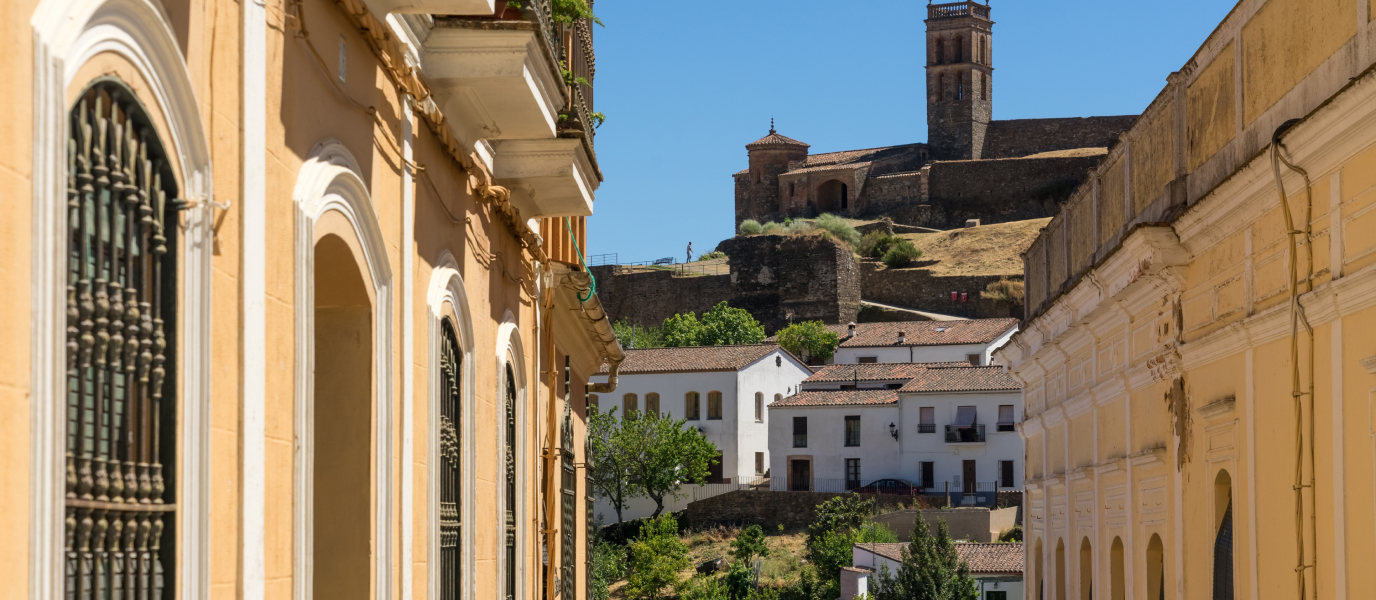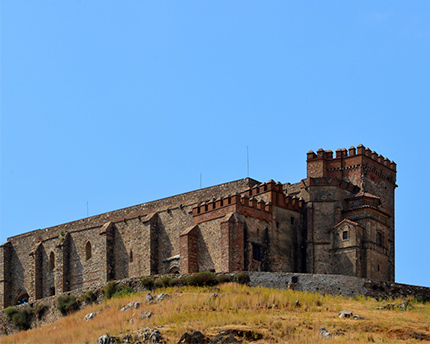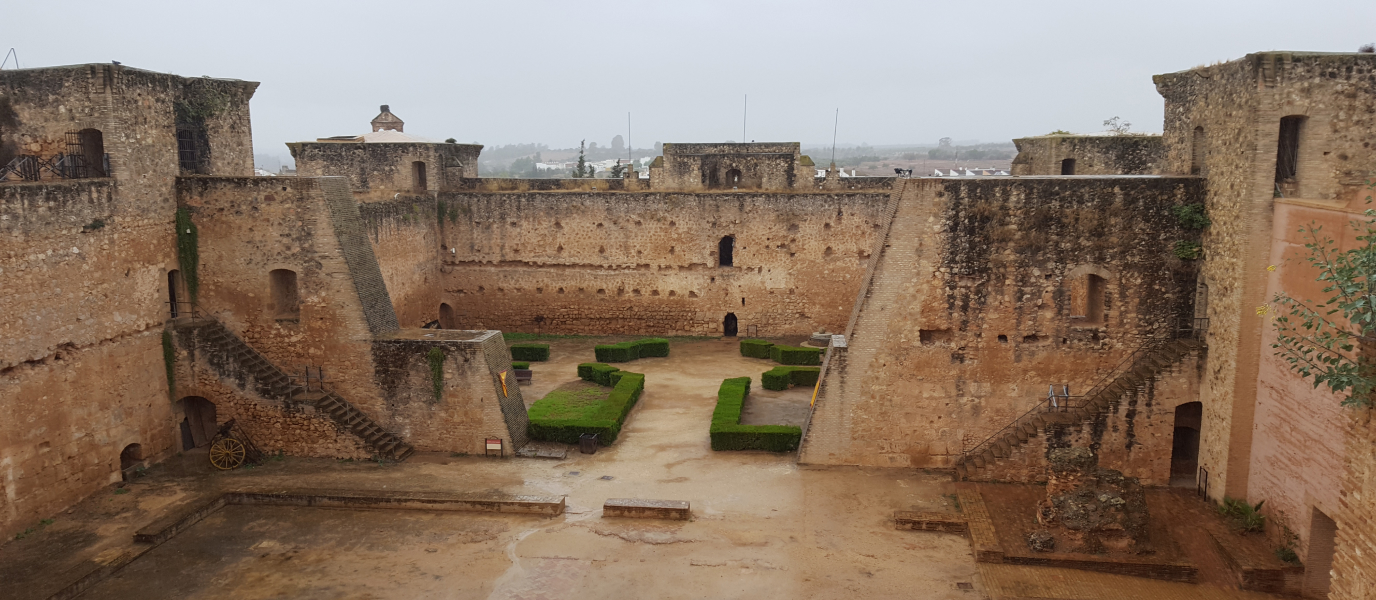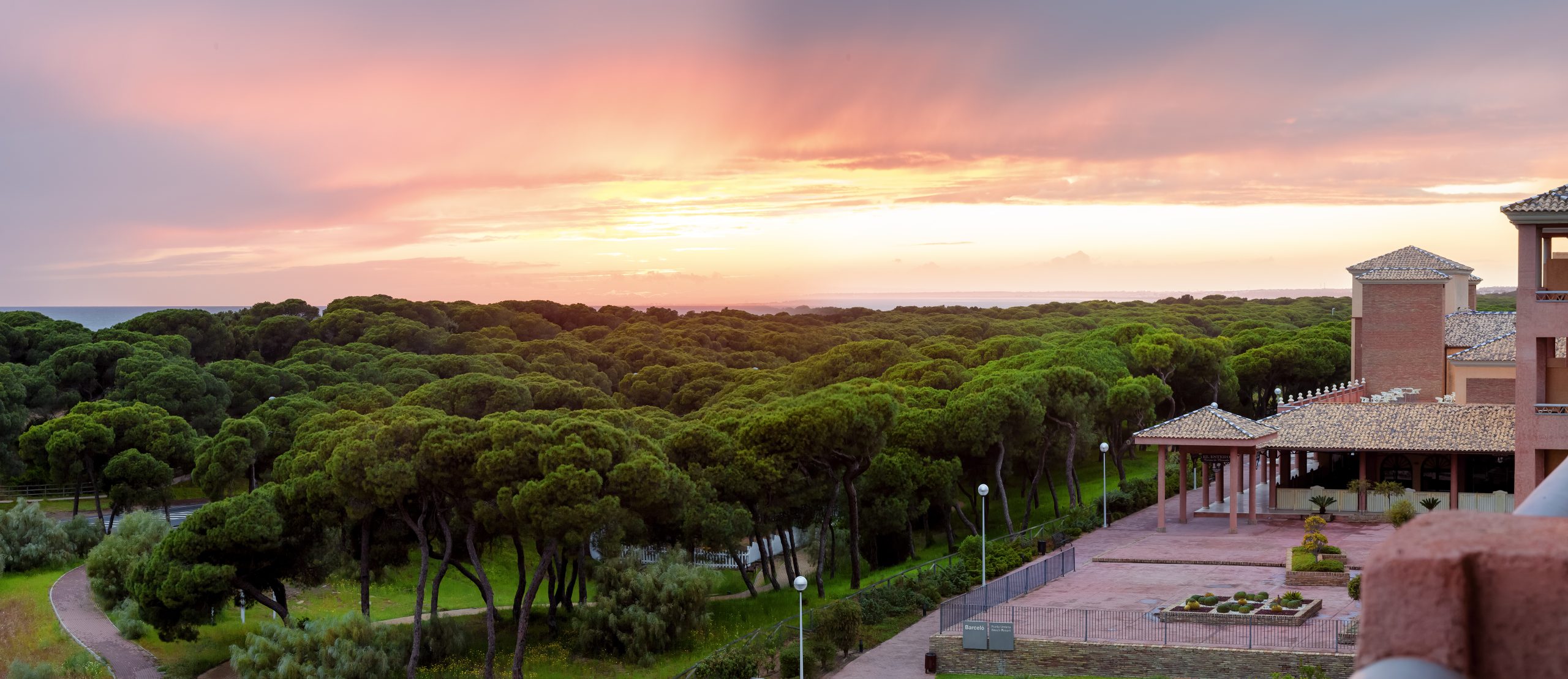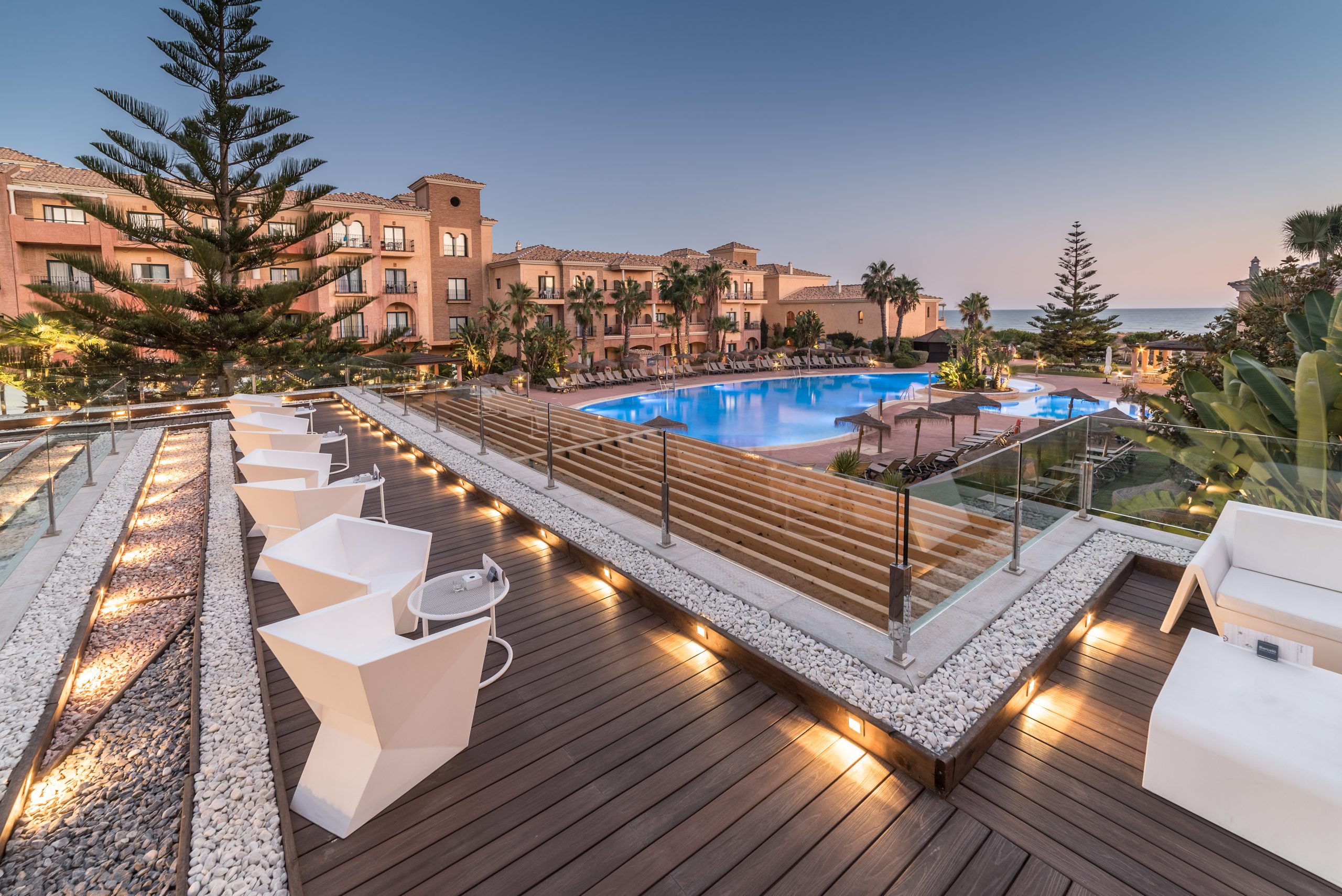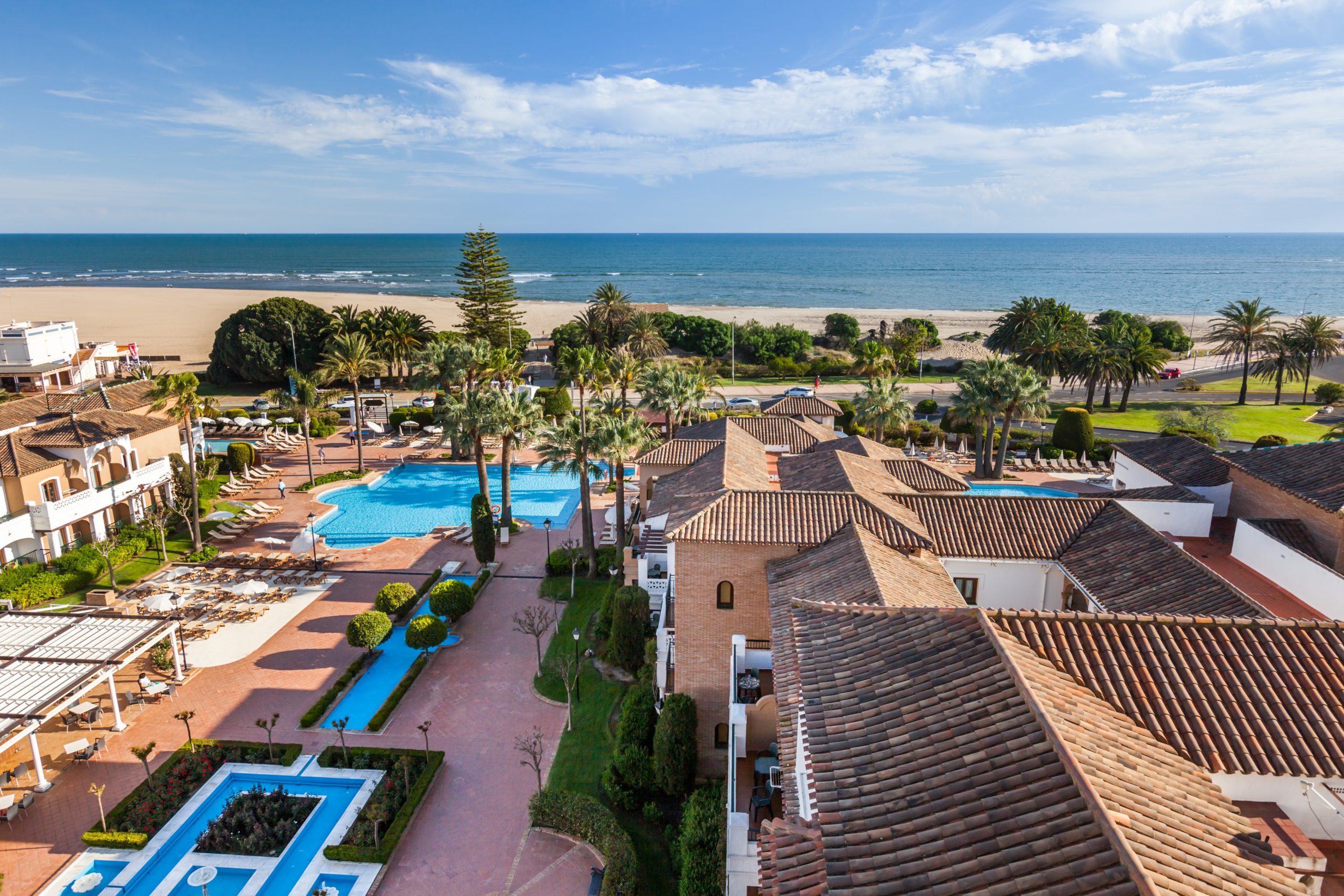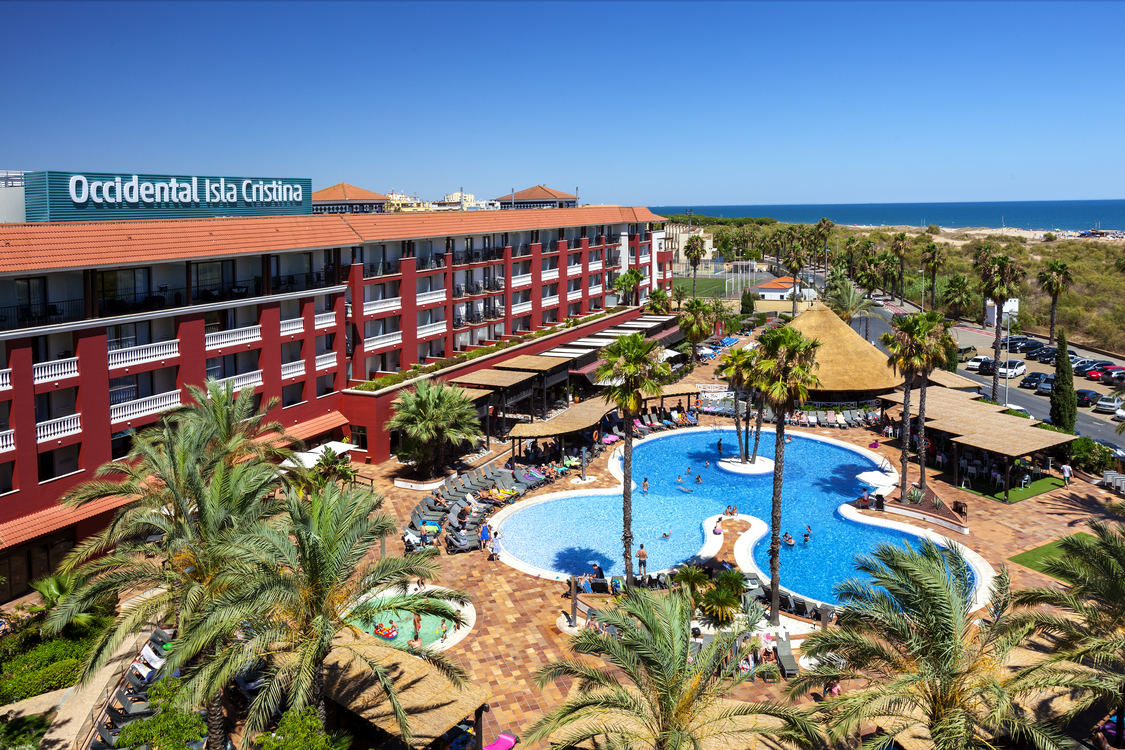Christopher Columbus stayed at The Friary of La Rábida prior to leaving for the New World, before his historic project to search for the Indies had even begun to take shape. Martin Alonso Pinzón, who died shortly after his return from Columbus’ first voyage, is also buried here. The likes of Hernán Cortés, Gonzalo de Sandoval and Francisco Pizarro also sojourned here. This explains why The Friary of La Rabida is one of the most emblematic ports of call along what is known as the Lugares colombinos – a tourist route of places related to Columbus’ first voyage.
Spread over a useful surface area of 2,000 m2, The Friary of La Rábida, a monumental edifice with an irregular floor plan, was built by the Franciscans between the 14th and 15th centuries with elements of Gothic and Moorish architecture. It has, in the course of history, been refurbished and repaired several times, most notably after the Lisbon earthquake of 1755. It was declared a Spanish National Monument in 1856.
Related experiences
History of The Friary of La Rábida
Scholars sustain that where The Friary stands today, in Palos de la Frontera, was always a spiritual place. Initially for the Phoenicians, who erected here a shrine to their God, Baal. Then for the Romans, for whom it was a place of worship to Proserpina. The Arabs also erected a Marabout dwelling, akin to a hermitage, here. Until the 18th century, when, after Christian conquest, it was taken over by the Templar Knights, devout worshippers of Our Lady of Miracles. Some even sustain that Francis of Assisi himself came all the way here to found a humble Franciscan community.
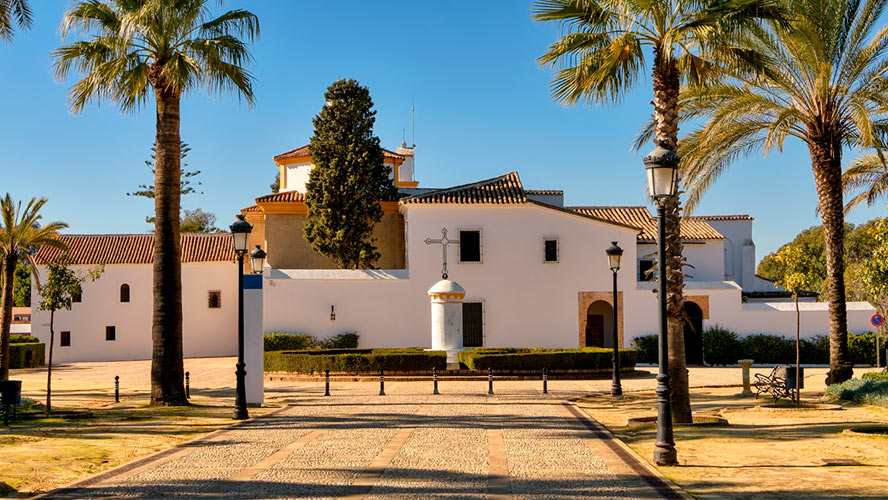
Perched on the banks of the Tinto River, in Palos de Frontera, the Friary lays claim to being the place to which Christopher Columbus retreated between 1485 and 1486, to mull over an undertaking that eventually culminated in nothing less than the ‘Discovery of America’. Here, he received the hospitality and spiritual and logistic support of the friars, who put him in contact with the Crown and sailors from the region. They also opened the door to the powerful Martín Alonso Pinzón, who provided him with economic support and who, after returning from America seriously ill, was buried at the feet of Our Lady of Miracles.
A journey to the times of Columbus
Much of the building is conserved intact, practically as it was at the time. With a bit of imagination, the 21st-century visitor can embark upon a journey through time and experience life in a Franciscan monastery as it was in the days of Columbus.
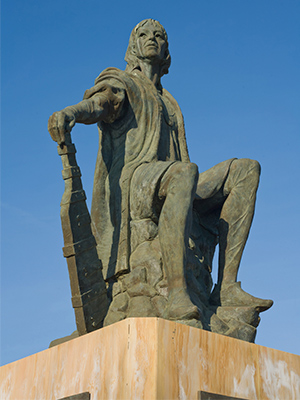
The Friary of La Rabida, in Huelva, is certainly worth the visit, if only to discover its magnificent XV century Moorish cloister, where time seems to have stood still since those seafaring souls dreaming of discovering new worlds holed up here. It is more than rumoured that it was here that Columbus made Brother Juan Pérez privy to the details of the voyage he was planning to undertake to the New World. On one side of the cloister you come upon the Meeting Room and the historical refectory, as well as the museum, which still conserves numerous commemorative relics of the ‘Discovery of America’.
Daniel Vázquez Díaz’s paintings
The Friary also houses something that is quite singular: frescos done in 1930 by artist Daniel Vázquez Díaz, a native of Nerva, assembled together and collectively entitled Poemas del Descubrimiento. Deployed in thematic panels, they are works that re-enact Columbus’ arrival in La Rábida and depict his relationship with Brother Juan Pérez, his expedition to America, the crew from Palos de la Frontera and Moguer, the departure from the port of Palos, the three caravels, etc. A monument in Columbus’ honour, built to mark the 500th anniversary of his death, stands in the gardens surrounding the monastery.
Perhaps, though, the most important image in this Franciscan monastery is that of Our Lady of Miracles, before whom Columbus knelt in prayer prior to setting out for America. She is also known as Santa María de la Rábida and is the patron saint of the monastery and the town of Palos de la Frontera. Carved in alabaster, no more than half a metre high, this gothic figure dating back to the 14th century is there in the friary church for all to see.
What to see near The Friary of La Rábida
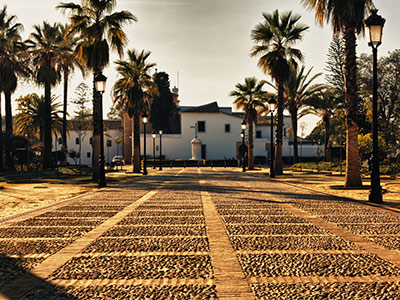
Anyone coming to visit La Rábida (Huelva) must also go see the 15th century Iglesia de San Jorge Mártir, and the Wharf of the Caravels, a museum installation with reproductions of La Pinta, La Niña and La Santa María, the ships that crossed the Atlantic in pursuit of a dream.
There also is another iconic Lugar colombino to be found beyond Palos de la Frontera: Moguer. It was in its 14th century monastery, El Monasterio de Santa Clara, that Christopher Columbus won over the abbess, Inés Enriquez, who happened to be the aunt of Ferdinand II of Aragon. El Convento de San Francisco is also worth visiting, as is the port of Moguer, where La Niña was built in 1488.
So, if you like History, (with a capital H!), do not hesitate. Do the entire Lugares Colombinos circuit. It will prove a fascinating experience.




































































